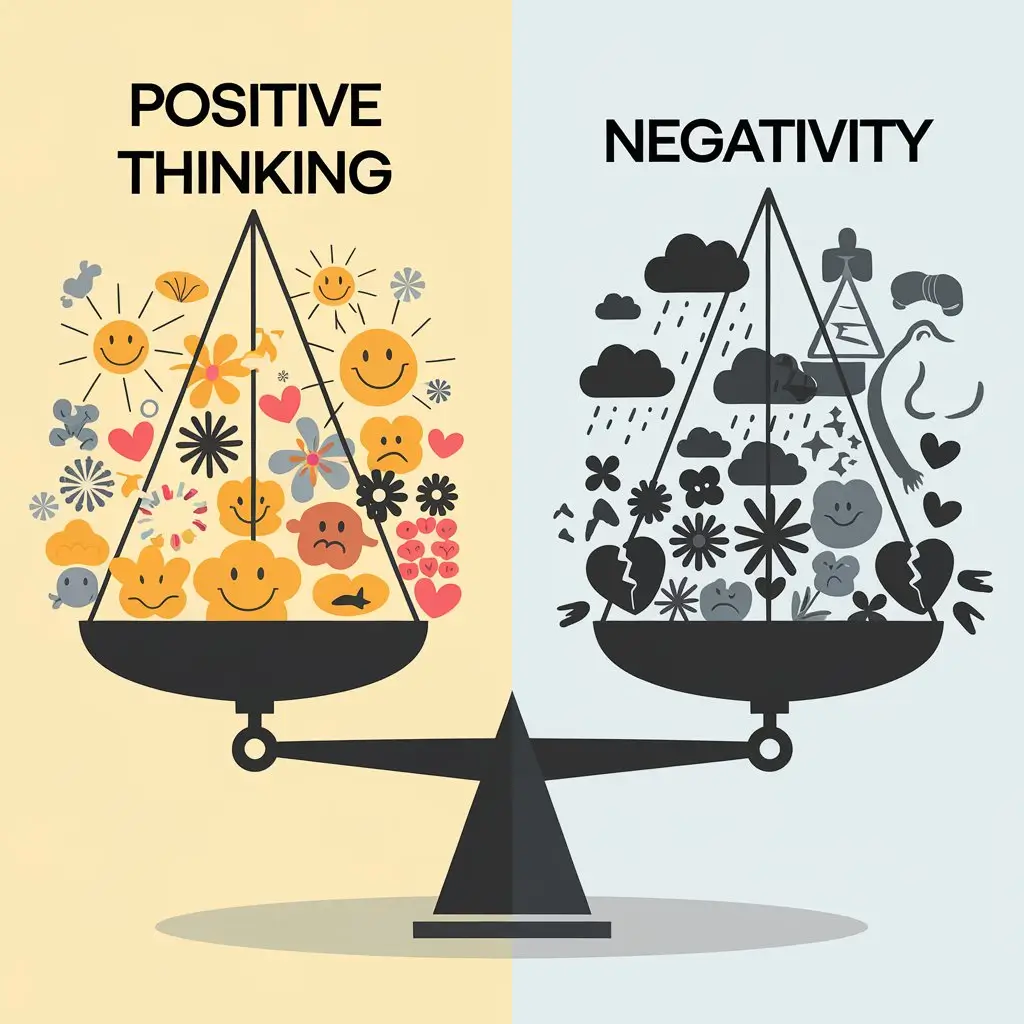In today’s fast-paced digital world, the concept of digital minimalism has emerged as a crucial strategy for enhancing productivity and focus. Digital minimalism is about intentionally curating your digital environment to reduce clutter and distractions, allowing you to prioritize what truly matters. As technology becomes increasingly integrated into our daily lives, the impact of digital clutter, such as overflowing email inboxes, endless app notifications, and information overload, can lead to decreased productivity and heightened anxiety. This article explores how adopting a digital minimalist approach can simplify your life and significantly enhance your focus and productivity.
Understanding Digital Clutter
What is Digital Clutter?
Digital clutter encompasses all the digital distractions that accumulate over time, including emails, social media notifications, unorganized files, and unused applications. It creates a chaotic digital environment that can overwhelm users, making it difficult to focus on essential tasks. This clutter not only includes physical items like apps and files but also extends to mental clutter, the constant barrage of information that our brains must process. Recognizing the multifaceted nature of digital clutter is the first step in addressing it effectively.
Sources of Digital Clutter
The sources of digital clutter are varied and often interrelated. Social media platforms demand constant attention, leading to an endless cycle of checking notifications and updates. Excessive notifications from apps can interrupt our workflows, pulling us away from important tasks. Additionally, the sheer volume of information available online can lead to an overwhelming sense of obligation to stay informed, further contributing to digital clutter. Each of these sources adds layers of distraction, making it increasingly challenging to maintain focus and productivity.
Psychological Impact
The psychological ramifications of digital clutter are significant. Studies have shown that an overloaded digital space can lead to increased stress and anxiety, hindering our ability to concentrate. When our minds are preoccupied with digital distractions, our productivity inevitably suffers. The constant need to check notifications can create a state of hyper-vigilance, where individuals feel compelled to respond immediately to digital stimuli. This can lead to burnout and a feeling of being perpetually behind. Understanding these psychological impacts is crucial, as it highlights the importance of creating a more intentional and simplified digital environment that promotes mental clarity and focus. By addressing digital clutter, individuals can not only improve their productivity but also enhance their overall mental well-being.
The Benefits of Reducing Digital Clutter
Enhanced Focus
One of the most immediate benefits of reducing digital clutter is the enhancement of focus. A decluttered digital space allows individuals to concentrate on their tasks without the constant interruption of notifications and distractions. When your environment is organized and free of unnecessary digital noise, it becomes easier to enter a state of deep work, where you can engage fully with your projects. Studies have shown that minimizing distractions can significantly improve cognitive performance, leading to higher quality work and more efficient task completion.
Increased Productivity
Research indicates that minimizing distractions can lead to substantial productivity gains. When individuals work in a streamlined environment, they are more likely to complete tasks efficiently and effectively, ultimately achieving their goals. By reducing the time spent navigating cluttered interfaces or responding to excessive notifications, you can redirect your energy toward meaningful work. Additionally, a clearer digital space can help prioritize tasks, making it easier to focus on high-impact activities that drive success.
Improved Mental Well-Being
Simplifying one’s digital life can lead to improved mental health. Reducing digital clutter alleviates anxiety caused by information overload and the pressure to stay constantly updated. A more organized digital environment fosters a sense of control and clarity, making it easier to manage stress. Moreover, engaging less with digital distractions allows for greater mindfulness, enabling you to be present in both your digital and physical interactions. This balance can result in a more positive mental state, enhancing overall well-being and life satisfaction. By prioritizing your mental health through digital minimalism, you create a sustainable foundation for both personal and professional growth.
Steps to Implement a Digital Minimalist Approach
Assessing Your Digital Life
The first step in adopting a digital minimalist approach is to assess your current digital habits. Take time to evaluate what tools and platforms you use daily and identify sources of distraction. Consider keeping a digital diary for a week, noting how much time you spend on various apps and websites, and reflecting on how each activity contributes to your goals. This awareness will help you pinpoint areas where digital clutter exists and inform your decluttering process.
Decluttering Your Digital Space
To effectively reduce digital clutter, consider the following strategies:
- Organize Files and Emails: Create a structured system for organizing important documents and emails. Utilize folders to categorize files by project or priority. Regularly review and delete anything that is outdated or irrelevant to keep your digital workspace streamlined.
- Unsubscribe from Unnecessary Newsletters: Review your subscriptions and eliminate those that add no value to your life. This not only reduces inbox clutter but also decreases the temptation to check emails constantly, allowing for deeper focus on tasks that matter.
- Delete Unused Apps and Accounts: Remove apps that you don’t use regularly to reduce distractions. Take a moment to evaluate the apps on your phone and computer, if an app hasn’t been used in the past month, consider deleting it. Additionally, deactivate accounts that no longer serve a purpose in your life, which can also help reduce the noise from notifications.

Setting Boundaries
Establishing boundaries is essential for maintaining a digital minimalist lifestyle. Set limits on screen time and social media usage by using built-in features on your devices or apps designed to track and restrict usage. Create tech-free zones or times in your daily routine, such as during meals or before bedtime, to disconnect and recharge. Communicate these boundaries to friends and family to foster understanding and support in your journey toward a more intentional digital life. By prioritizing these boundaries, you can create a healthier relationship with technology that promotes productivity and well-being.
Tools and Techniques for Digital Minimalism
Productivity Apps
Utilizing productivity apps can significantly streamline tasks and enhance organization in your digital life. Tools like Todoist, Trello, and Notion help manage projects efficiently by providing a clear overview of tasks and deadlines. These apps allow you to categorize and prioritize your workload, making it easier to focus on what’s truly important. Additionally, features like reminders and integrations with other apps can help reduce the clutter in your workflow, enabling you to concentrate better on your tasks. Choosing the right productivity app tailored to your needs can transform your approach to work and foster a more organized digital environment.
Digital Decluttering Tools
Consider using digital decluttering tools that help you organize your digital life more effectively. Email management tools like Clean Email or Unroll.me can help keep your inbox tidy by automating the process of unsubscribing from unwanted newsletters and categorizing important emails. File organization apps, such as Google Drive or Dropbox, allow you to store and categorize documents efficiently, making it easier to find what you need when you need it. These tools not only save time but also reduce the mental burden associated with searching through cluttered digital spaces.
Mindfulness Practices
Incorporating mindfulness practices can further enhance focus in a digital world inundated with distractions. Techniques such as meditation, deep breathing exercises, and journaling can help ground you in the present moment, allowing for clearer thinking and reduced anxiety. Mindfulness encourages you to reflect on your digital habits and their effects on your mental state. By regularly practicing mindfulness, you can develop a heightened awareness of when you’re prone to distractions, helping you make more intentional choices about your digital engagement. This proactive approach not only supports your digital minimalism goals but also fosters a healthier relationship with technology.
Case Studies and Success Stories
Real-Life Examples
Many individuals and organizations have embraced digital minimalism and reaped significant benefits. For instance, a prominent tech company implemented a four-day workweek as part of their commitment to employee well-being and productivity. By reducing the workweek, they encouraged employees to declutter their digital lives, streamlining communications and minimizing unnecessary meetings. As a result, the company reported a 25% increase in productivity and a marked improvement in employee satisfaction and mental health. This case illustrates how a structured approach to digital minimalism can lead to tangible success in a corporate environment.
Another example is the personal journey of a well-known author who decided to disconnect from social media entirely for a year. She found that by eliminating the constant barrage of notifications and updates, she could devote more time to writing and reflection. The result was a bestselling book that emerged from this focused period of creativity. Her experience highlights how stepping back from digital distractions can unlock deeper levels of productivity and creativity.
Lessons Learned
Key takeaways from these success stories emphasize the importance of intentionality in digital engagement. Individuals and organizations that have adopted digital minimalism often report a greater sense of clarity and purpose in their work. They learn to prioritize meaningful interactions and focus on high-impact activities that drive success. Additionally, these case studies underscore the significance of establishing boundaries around digital consumption. By creating designated times for checking emails or social media, individuals can maintain a healthier balance between their digital and personal lives.
Furthermore, these stories illustrate that digital minimalism is not a one-size-fits-all solution. Each individual or organization must tailor their approach based on their unique needs and circumstances. The flexibility to adapt strategies and tools ensures that digital minimalism can be effectively integrated into various lifestyles, ultimately leading to enhanced productivity and well-being. By sharing these experiences, others can draw inspiration and practical insights to embark on their own journeys toward a more minimalist digital life.
Challenges and How to Overcome Them
Resistance to Change
Transitioning to a digital minimalist lifestyle can be challenging, as many people are deeply entrenched in their digital habits. Common barriers include the fear of missing out (FOMO) and the comfort of familiar routines. To overcome this resistance, start small by implementing one or two changes at a time. For example, begin by decluttering your email inbox or reducing the number of apps on your phone. Gradually incorporate more minimalist practices, allowing your mind and habits to adapt without overwhelming yourself. Small milestones should be recognized as stepping stones toward your motivation.
The Fear of Missing Out (FOMO)
Addressing FOMO requires a significant mindset shift. Many individuals feel pressured to stay constantly connected to social media and digital communications, fearing they will miss important updates or social interactions. To combat this, set specific times for checking social media or emails, allowing yourself to engage without feeling the need to be “always on.” Remind yourself that meaningful connections can still be maintained without constant digital engagement. Consider curating your social media feeds to include only accounts that inspire and uplift you, reducing the noise and enhancing your overall experience.
Maintaining Long-Term Success
Sustaining a digital minimalist lifestyle requires ongoing mindfulness and regular reassessment of your digital habits. Establish a routine for periodically reviewing your digital space, perhaps once a month, to ensure it remains clutter-free and aligned with your goals. This could involve deleting old files, unsubscribing from new distractions, or even reevaluating the apps you use. Additionally, engage in self-reflection to assess how your digital habits affect your productivity and mental well-being. By staying proactive and mindful, you can successfully maintain a simplified digital life that continues to support your focus and productivity over the long term.
Conclusion
In summary, adopting a digital minimalist approach can significantly enhance focus, productivity, and overall mental well-being. By reducing digital clutter and intentionally curating your digital environment, you can prioritize what matters most in your life. Take the first step towards digital minimalism today, your mind and productivity will thank you for it. Embrace the simplicity that comes with a streamlined digital life and unlock your potential for success.


























